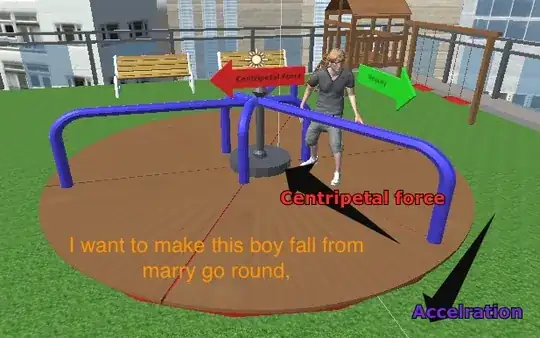First, be aware that there is no such thing as a centrifugal force. The "centrifugal force" is not a force! It is just a feeling. A feeling that is a result of the body's tendency to continue moving due to inertia. There is no "formula" for a "centrifugal force" as such, because it doesn't exist. It just feels like it.
What does exist is this tendency to continue moving straight when in motion. And "moving straight" on a merry-go-around or any other circular motion (a turning car for instance) means moving away from the centre. In order to not move away from the centre and instead follow the merry-go-around around the circle, a centripetal force must be exerted on you inwards. You mentioned that in the question. But there is no "centrifugal force" outwards at he same time. It is just the body resisting to move along with the centripetal force. I tend to call it a centrifugal effect, to have a better word for it than "centrifugal force", since it isn't a force.
If nothing stops you (if you don't hold the rail of the merry-go-around), then you will continue moving straight away from the centre and there is no force on you that does this (there will only be a friction force from the ground when you eventually fall).
But if you hold the rail or are being blocked by the rail or similar, then the rail pulls you along with it. Pulling you along is done by a force that depends on the situation:
- If you lean against the rail, then the rail exerts a normal force on you which gives you the necessary radial acceleration that causes you to follow along in the circular motion.
- If you hold the rail then the force might come from your arms.
- In a turning car, you feel squeezed into the door which holds back with a normal force or pulled by the seat belt.
- Etc.
This force is the centripetal force as you mention. And this is all there is. A centripetal force and then a radial acceleration. The centripetal force has no specific formula, because it depends on the situation as described. The radial acceleration does have a formula, as you may already know:
$$a_r=\frac{v^2}r$$
But we cannot get any more specific. There is no such thing as a "centrifugal force"; it is not a force which we can set up a formula for.
